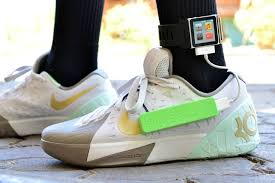Manila, July 3 – A 15-year-old schoolboy from the Philippines has done something truly inspiring. While most teenagers are busy on their phones, this young mind, Angelo Casimiro, has created shoes that generate electricity when you walk—and can even charge your phone! His unique invention is not just smart—it’s a symbol of hope and innovation for developing countries where power cuts are common.
Every Step Can Now Create Power
Angelo came up with an idea that’s as simple as it is brilliant: what if your daily steps could also power your mobile phone? His specially designed shoes produce electricity while walking or running, using a technology called piezoelectricity. This means that with each step, pressure is converted into power.
The small amount of electricity is stored in a power bank and can charge devices like a mobile phone, flashlight, or even small electronics used in school projects.
How Do the Shoes Work?
Inside the sole of the shoe, Angelo added piezoelectric elements—materials that generate electric current when pressure is applied. He placed them in the heel, where the foot presses hardest while walking. As a person walks, these materials produce a small electric charge. That charge is collected and stored for later use.
This setup is quiet, lightweight, and doesn’t make the shoe uncomfortable. It feels just like regular footwear.
Why This Invention Is So Important
In many parts of the Philippines, and in other countries too, electricity is not always available. Power cuts happen often, and people struggle to charge phones or use light at night. Angelo’s invention can help in such situations. Imagine being able to walk to school and charge your phone at the same time—especially useful during emergencies or disasters.
Also, it’s a clean and renewable source of energy—no fuel, no pollution. Just footsteps!
A Journey From Curiosity to Creation
Angelo’s interest in electronics started at a very young age. He liked opening up toys and gadgets to see how they worked. Later, he began building robots, learning programming, and participating in science competitions.
His electricity-generating shoe started as a small school project, but he kept improving it. He tested it, fixed issues, added better circuits, and made it more useful for daily life.
Not For Money, But For People
What makes Angelo’s story even more heart-touching is that he did not keep his invention a secret. He made it open-source, meaning anyone can copy the design and build their own version. Schools, students, and communities can all benefit from his work.
He didn’t want to sell the idea or become famous—he simply wanted to solve a real problem and help people.
A Glimpse of the Future
This shoe may look simple, but it has big possibilities. In the future, such wearable devices could not only charge phones but also track health, send emergency alerts, or collect important data—all without the need to plug in or recharge.
This idea opens the door to a new type of technology—one that’s low-cost, useful, and sustainable.
Conclusion
Angelo Casimiro’s electricity-generating shoe is proof that age is no barrier to innovation. His project shows how one smart idea, born out of curiosity and compassion, can create real change in the world. In a time when big companies focus on profits, this boy from the Philippines showed us that invention is most powerful when it’s made for people, not money.
His journey is a message to every young mind: You don’t need a lab or millions of rupees to make a difference. Just start with what you have, keep learning, and walk with purpose.
FAQs
Q1. Who is Angelo Casimiro?
Angelo is a 15-year-old student from the Philippines who invented electricity-generating shoes that can charge a mobile phone while walking.
Q2. How do the shoes produce electricity?
The shoes use piezoelectric materials that generate electricity when pressure is applied—like from walking or running.
Q3. What devices can be charged using these shoes?
They can charge small devices like mobile phones, flashlights, and low-power electronics.
Q4. Is the invention available in the market?
No, but Angelo has made the design open-source so anyone can build or improve it themselves.
Q5. Why is this invention important?
It’s useful for areas with poor electricity supply and promotes clean, renewable energy solutions for daily life.

